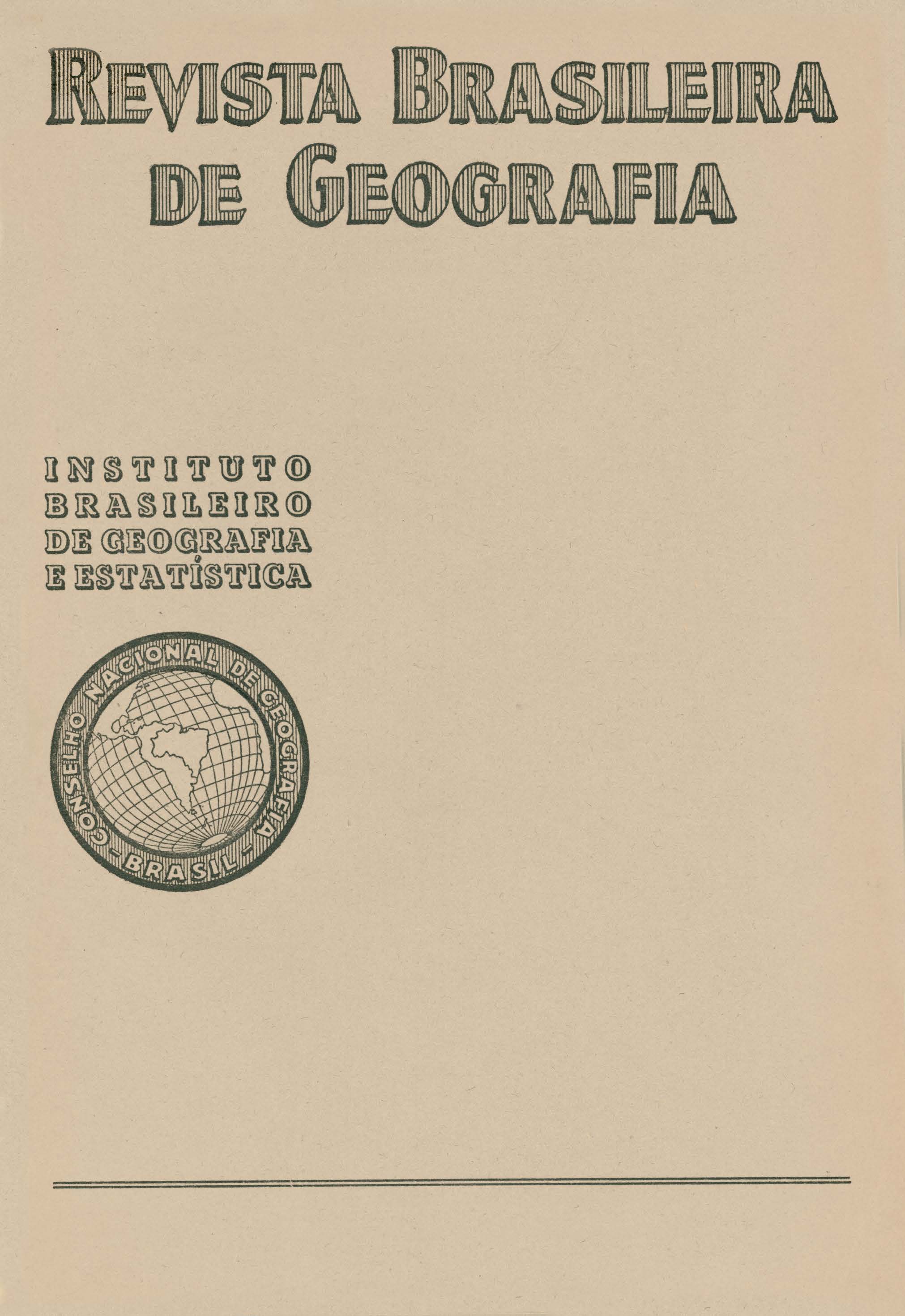Cidades serranas : Teresópolis, Nova Friburgo, Petrópolis : artigos - 1947, v. 9, n. 1, p. 3-56Cidades serranas : Teresópolis, Nova Friburgo, Petrópolis : artigos - 1947, v. 9, n. 1, p. 3-56
Keywords:
Rio de Janeiro;, Nova Friburgo;, Petrópolis;, Teresópolis;, Geografia Urbana;, Cidades e Vilas.Abstract
The similarity of the geographical conditions of the part of the "Serra do Mar" that rises toward the northeast from Guanabara bay, has given similar family features to the three cities - Nova Friburgo, Petrópolis, and Teresópolis - even though they were founded at different times and under different circumstances.
Nova Friburgo is the oldest and was begun through the promise made in a manifest of about 1818 by king Dom João VI. In it, he assisted in the colonization of Brazil by especially acquiring the estate of Morro Queimado for Swiss emigrants.
Petrópolis, the second oldest city, began on the private estate of Dom Pedro II. It began to attract. colonizers at the end of the first half o f the 19th century.
Lastly, Teresópolis was founded without official aid. It progressed slowly by means of sporadic disintegration of old farming and pastoral estates.
They are still related by altitude which is above 800 meters; by an average temperature which is 17 degrees in Teresópolis, 17,2 degrees In Nova Friburgo and 18,2 in Petrópolis; and by other analogous climatic conditions, such as, an abundance of water in the vicinity, a mountainous aspect out by streams that rush down the mountainsides and falls of which are used industrially, and the geomorphology of their Archean formations.
The cities are located at the side of the roads used in the penetration of the hinterland and barely cross the ridge of the escarpments. The escarpments are locally designated but belong to the same orographical system elevated from the lowland of Guanabara, the site of the first setting in the region.
The cities expanded, . respective to their foundation. through the river valleys of the Bengalas. Piabanha, and Paquequer. These rivers are direct branches o r interposing collectors of the Paraíba river, which is the reason for the sloping of the land toward the north and northeast.
Nova Friburgo and Petrópolis have flanked their river beds and tributaries whit streets. Teresópolis has not, as yet, used its river as a decoration element.
They are praised as being favorable summer localities. As the transportation of products for the Cariocan market is still not easy, they have begun to experiment with the development of agriculture, cattle-raising, and, more recently, industry.
In spite of being considered a noble city with the dignified name of the Emperor Dom Pedro II, to whom the land belonged, Petrópolis has given an example of industrialization to which it owes its development. However, the agricultural toil of the German colonizers, ·contracted by the Cariocan government, should not be entirely scorned. Agricultural products and flowers are still being cultivated in more than one of its districts. Products which not only supply the urban market but which are frequently in sufficient quantity for exportation.
Nova Friburgo, colonized by Swiss farmers, has the deficiency in the means of communication due to its greater distance from Rio de Janeiro and the coast. This has consequently retarded its progress. The establishment of several factories, however, has stimulated it with new energies without prejudicing rural work.
Teresópolis, which was established later, has compensated for its industrial backwardness with the charm of its natural beauty, marveled at by all of its visitors. It is the most recent of the three to attach itself to the railway that already unites the two to Rio de Janeiro. It also has the least population as shown by the following figures:
City:
Petrópolis . . . . . . . . . .. . . . . . . 51 221
Nova Friburgo . ~.......... 24 841
Teresópolis . . . .. . . .. . . . . .. . 15 346
Entire Municipality (Respectively):
-> 86 513
-> 39 712
-> 29 799
According to the author Virgilio Corrêa Filho, Technical-Assistant of the National Geographical Council, the relative backwardness of their economy has lately been compensated for by the increase of periodic inhabitants among which are the wealthy capitalistic Cariocans. He visited the three mountain cities in July, 1944. The cities are included by the. State of Rio de Janeiro among its health resorts thus bringing out the dominant characteristic of the cities.






